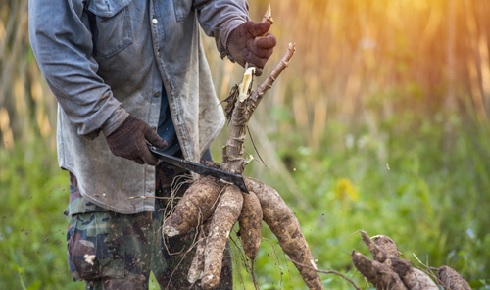The future of genetic tech: delivering benefits for all parts of the world

Matthew Venezia and Kate M Creasey Krainer FRSB on the inequity of genetic engineering’s impact so far
September 8th 2021
In the three decades since the introduction of the first commercially available genetically engineered (GE) crop, 526 GE traits in 32 crops have been approved in 43 countries and the European Union[1]. Of the 43 countries outside of the EU, just three are low-income countries and only 12 are lower-middle-income countries (as classified by the World Bank)[2].
In terms of the number of approved GE crops, the lion’s share lies in high-income and upper-middle-income countries, with 206 traits approved in the United States alone. Among all 15 low- and lower-middle-income countries combined, more than half of the 231 approved traits come from the Philippines, a nation poised to outgrow its status as a lower-middle income economy in the near future, according to the World Bank.
The majority of GE crops are the world’s most economically important crops, such as maize, alfalfa and soya bean. These crops, while important to the global economy, are not produced directly for food in many nations. In food insecure countries, the impact of the GE crop is almost nonexistent. The most important crops of the hungriest countries, such as cassava, sorghum, millet and other orphan staple crops, do not have a single GE trait approved.
In comparison, maize, the world’s most economically important crop, has 238. Most GE traits aim to increase yield, such as those which provide herbicide tolerance and pest resistance, traits desperately needed in orphan staple crops and those populations that rely on them. However, to date, the only major orphan crop to have one of these important traits applied is cowpea (Bt cowpea)[1]. Although engineered orphan staple crops would have the greatest direct benefit to hungry and malnourished populations, resources and funding for development of these crops still lags significantly behind their more economically important counterparts[3].
The parts of the world least impacted by biotechnology are also inhabited by the world’s most vulnerable populations, on the frontlines of both the hunger and climate crises. Sub-Saharan Africa, a region which collectively has just 39 approvals for GE traits, is the world’s hungriest region. It is also the most vulnerable to climate change, with the five most vulnerable nations of the world situated here[4].
Not only are the regions of the world least impacted by GE technology most impacted by hunger and climate change, but they are also projected to see the largest rise in population over the next 30 years. By 2050, the world population is expected to reach 9.7 billion, with nearly all of the population growth expected to come from countries with high levels of hunger, especially low- and lower-middle income countries[5].
Moving forward into the age of gene editing with CRISPR/Cas systems, we must ensure that history does not repeat itself. The inequity in the impact of the GE crop today is evident, and with the decreased cost of research and development with gene editing technology, the opportunity to provide improved varieties of orphan crops to growers around the world must be seized.
For the 800 million people who are currently facing food insecurity and the hundreds of millions more projected to in the near future, today’s strategies of crop improvement must be unencumbered by the burden of inequity that has plagued the genetic engineering of the past if we are to create a world where access to improved crops is not dependent on the economy of a grower’s nation.
Dr Kate M Creasey Krainer FRSB is the president and founder of the Grow More Foundation
Matthew Venezia is the Grow More Foundation’s lead intern and an undergraduate at Stony Brook University, New York, US
1. GM Approval Database, GMO Database, GM Crop Approvals - ISAAA.org (accessed Jan 17, 2021).
2. World Bank Country and Lending Groups. World Bank Data Help Desk
3. He, S.; Creasey Krainer, K. M. The Inequity of Biotechnological Impact. Mol Plant, 14 (1), 1–2, (2021).
4. Dame, M. C. W. // U. of N. Country Index // Notre Dame Global Adaptation Initiative // University of Notre Dame (accessed Feb 16, 2021).
5. UN.org: 9.7 billion on Earth by 2050, but growth rate slowing, says new UN population report (accessed Jan 18, 2021).


